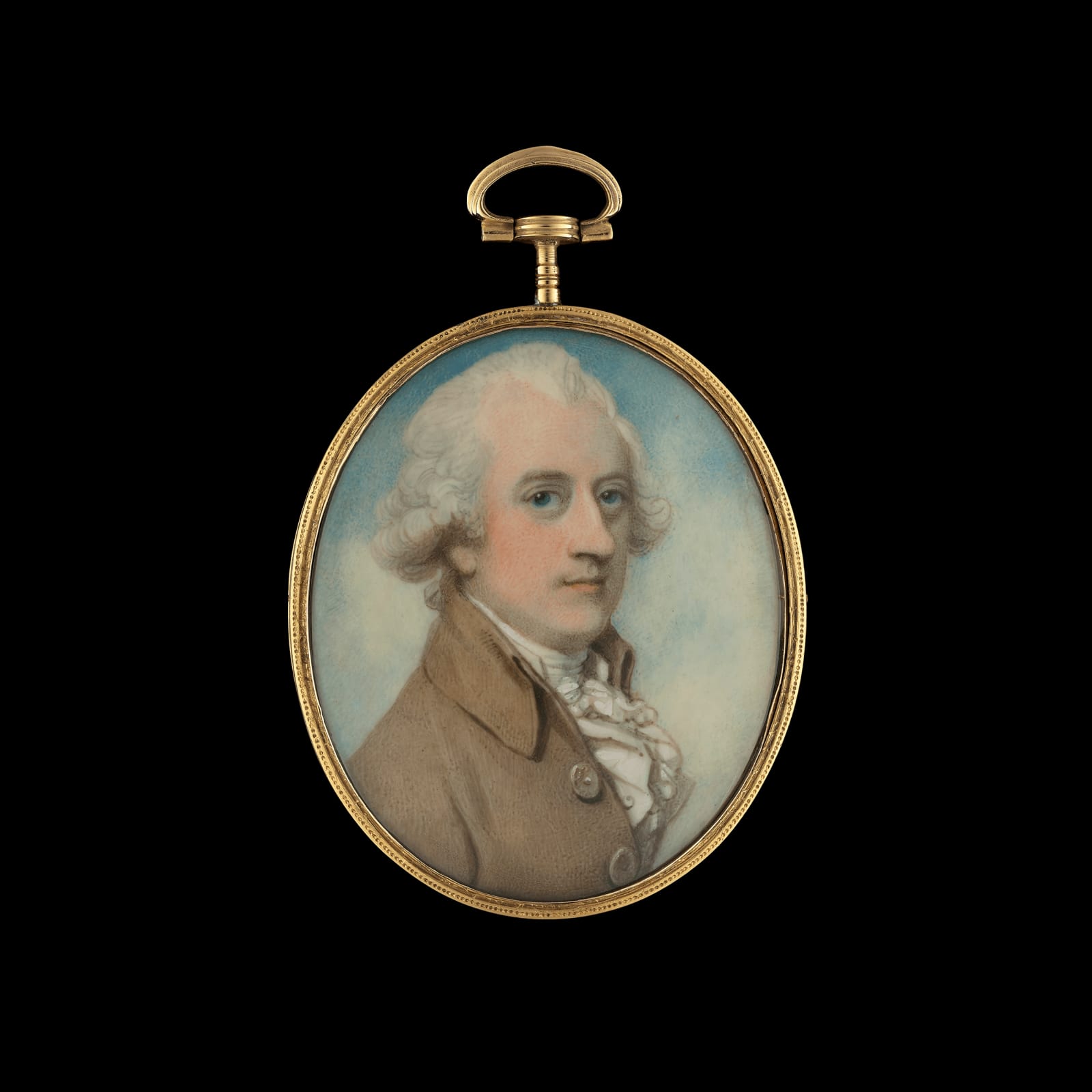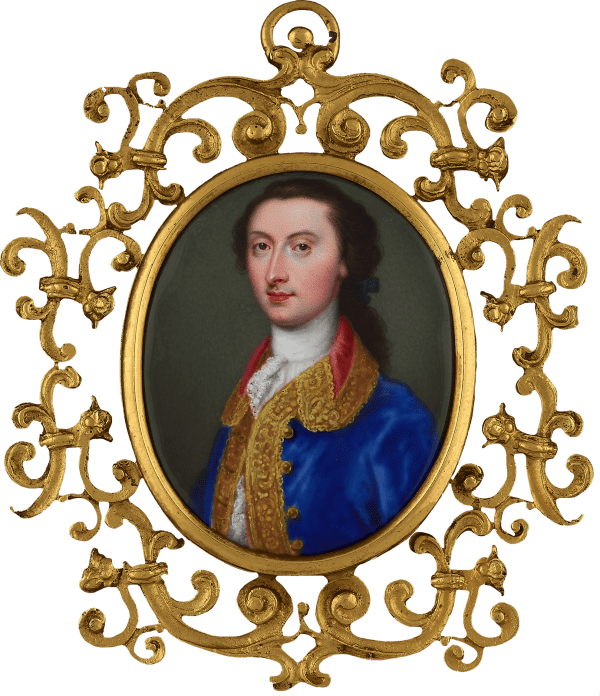
Richard Cosway
A Gentleman called C. Purling, wearing brown coat, white stock and powdered hair en queue, c. 1795
Watercolour and bodycolour on ivory
Oval, 3.2 in. (60 mm) high
Philip Mould & Co.
%3Cdiv%20class%3D%22artist%22%3ERichard%20Cosway%3C/div%3E%3Cdiv%20class%3D%22title_and_year%22%3E%3Cspan%20class%3D%22title_and_year_title%22%3EA%20Gentleman%20called%20C.%20Purling%2C%20wearing%20brown%20coat%2C%20white%20stock%20and%20powdered%20hair%20en%20queue%3C/span%3E%2C%20%3Cspan%20class%3D%22title_and_year_year%22%3Ec.%201795%3C/span%3E%3C/div%3E%3Cdiv%20class%3D%22medium%22%3EWatercolour%20and%20bodycolour%20on%20ivory%3C/div%3E%3Cdiv%20class%3D%22dimensions%22%3EOval%2C%203.2%20in.%20%2860%20mm%29%20high%3C/div%3E
To view all current artworks for sale visit philipmould.com
Born in Devon, the son of a headmaster was attracted to art from an early age and by the age of twelve was working in London under Thomas Hudson and learning at Shipley’s drawing school. Cosway first exhibited at the Society of Artists in 1760 and entered the Royal Academy Schools in 1769, exhibiting there 1770-1806.
Perhaps the most characteristic feature of Cosway’s work is the captivating level of luminosity he manages to create. Throughout his career Cosway mastered the use of transparent pigments, which when applied diligently onto ivory exploited the natural glow of the support, as seen in the present work. Another distinguishable feature of Cosway’s work is the sky background, which was exemplified by Cosway and later adopted by competitors such as Andrew Plimer (1763-1837), who, along with brother Nathaniel, Cosway taught to paint.
The present work dates to circa 1785 and was painted at a time when Cosway very much dominated the market for portrait miniatures. He developed a technique, seen clearly here, which contrasted delicate stipple work in the face with more fluent, expressive brushwork in the body and background. Other techniques include ‘floating’ his watercolour pigments on the pale ivory surface he allowed the luminous transparency of the material to suggest the natural glow of light.[1] Here he has left much of the ivory behind the sitter’s head bare.
[1] J. Rice, Encyclopaedia of Antiques, (London, 1991), p. 21.
This portrait of a Gentleman called ‘C. Purling’ was painted during Cosway’s most prosperous years as an artist. He had recently been appointed Miniature Painter to the Prince of Wales (a position he maintained until 1811). Although the sitter in this portrait is currently unidentified, the Purling family appear to have had strong links with the British Navy, India and the East India Company during the eighteenth century.
Provenance
With David Lavender (1997);Private Collection UK
Share
- X
- Tumblr
Related artworks
-
 Christian Friedrich ZinckeA Nobleman, probably a member of the Townshend family, c. 1740
Christian Friedrich ZinckeA Nobleman, probably a member of the Townshend family, c. 1740 -
 Richard CoswayA Lady, wearing white muslin dress with high collar and yellow belt, her hair powdered, c. 1780
Richard CoswayA Lady, wearing white muslin dress with high collar and yellow belt, her hair powdered, c. 1780 -
 Andrew PlimerTriple portrait, Sir A. Floyd in brown frock coat; the other side his twin daughters, c. 1800
Andrew PlimerTriple portrait, Sir A. Floyd in brown frock coat; the other side his twin daughters, c. 1800


